Home » Posts tagged 'global citizens'
Tag Archives: global citizens
National Geographic Out of Eden Walk
Tiffany Imparato
This week I had the pleasure to explore a very exciting project conducted by National Geographic. The project termed the Out of Eden Walk is a truly amazing journey by Paul Salopek that follows the journey of those whom migrated from Africa back in the stone age. He follows the very journey of migration that happened so long ago and inspires his viewers through his adventure. Along the journey he includes photos, stories, audio, and videos that document everything along the long way. He documents the landscape of his monumental journey along with those that he encounters and the stories they have to tell as well. Through telling their stories he gives a voice to the silent on a global level. Paul traveled around 24,000 miles and it took close to a decade I must admit I don’t think I would survive past the first month but thankfully I can experience it without leaving my home.

The entire journey of the project is very welly documented and users have free access to an interactive recount of the experience. As a future educator I think that this would be an amazing tool to use in my future classroom. The journey covers history, geography, encourages global citizenship, and teaches students about various cultures. Each interactive section of the voyage includes an array of information, photos, videos, and real-life encounters. The trip was so welly documented it gives the viewer a truly immersive experience that makes you believe you are walking right there with Paul. I think that this type of interactive tool could really get students excited to explore the walk and that they will find themselves lost in the exploration as well. I have decided to cover three sections of the voyage to explore and help you understand how remarkable this entire project is.
The first section I choose was Paul’s journey out of Africa where it all began in January of 2013.
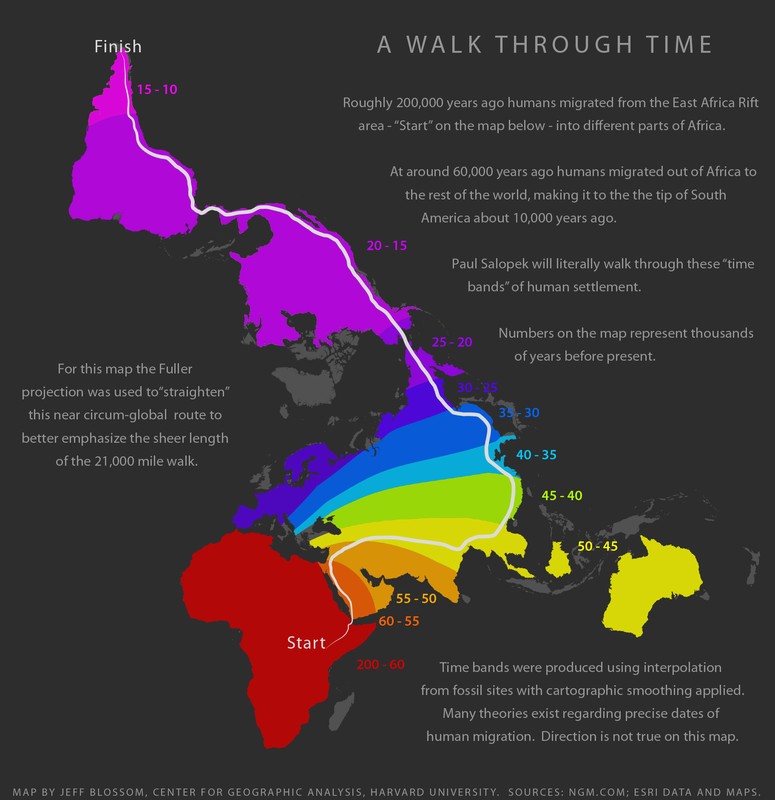
Paul began his journey in Ethiopia which I am a bit jealous of because I have always wanted to explore the culture and countryside there. Ethiopia is a land that is deeply embedded within their culture. On January 21, 2013 he set out on this amazing migration journey in Herto Bouri, Ethiopia along with his guide Alema Hessan.
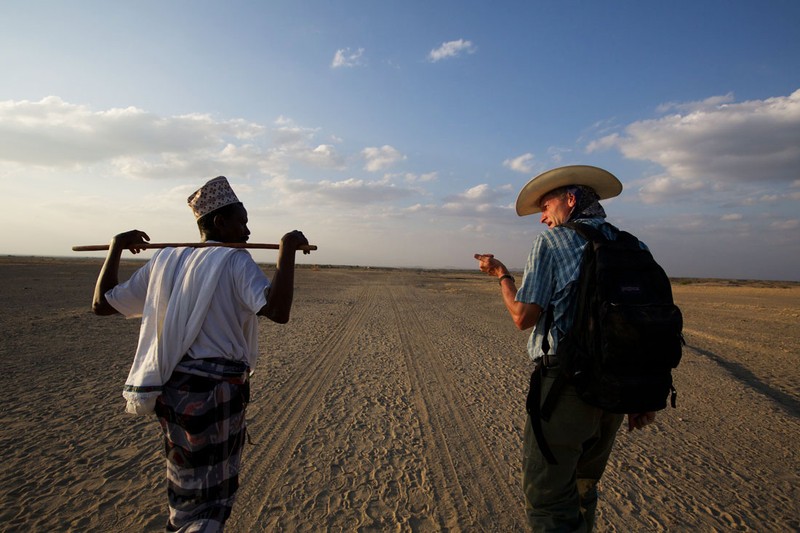
In the beginning of their trek, they lead a caravan of camels toward the Indian Ocean following their nomad voyages that walked before them. The aera that they are walking has some of the world’s oldest fossils from humans just below their feet. I would imagine it must be a humbling experience to walk the same route of so many. During their way through this vast countryside, they walk through the Rift Valley which is compared to a natural highway. With water being scarce they come across hand dug wells that provide a much-needed source for them.
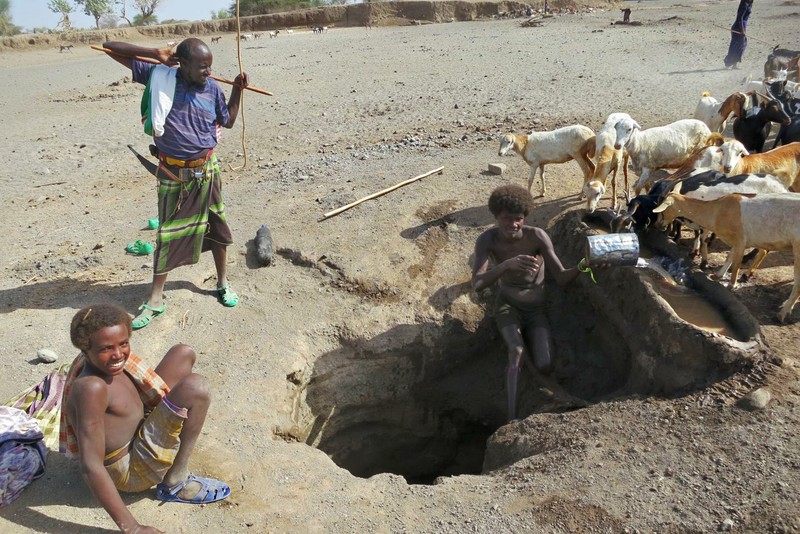
This is a humbling moment because sitting here in my comfortable house water is something I take for granted every day. The people that live and travel through this desert area rely heavily on the use of these hand dung wells.
The first aera I decided to explore Afar Badlands, Ethiopia
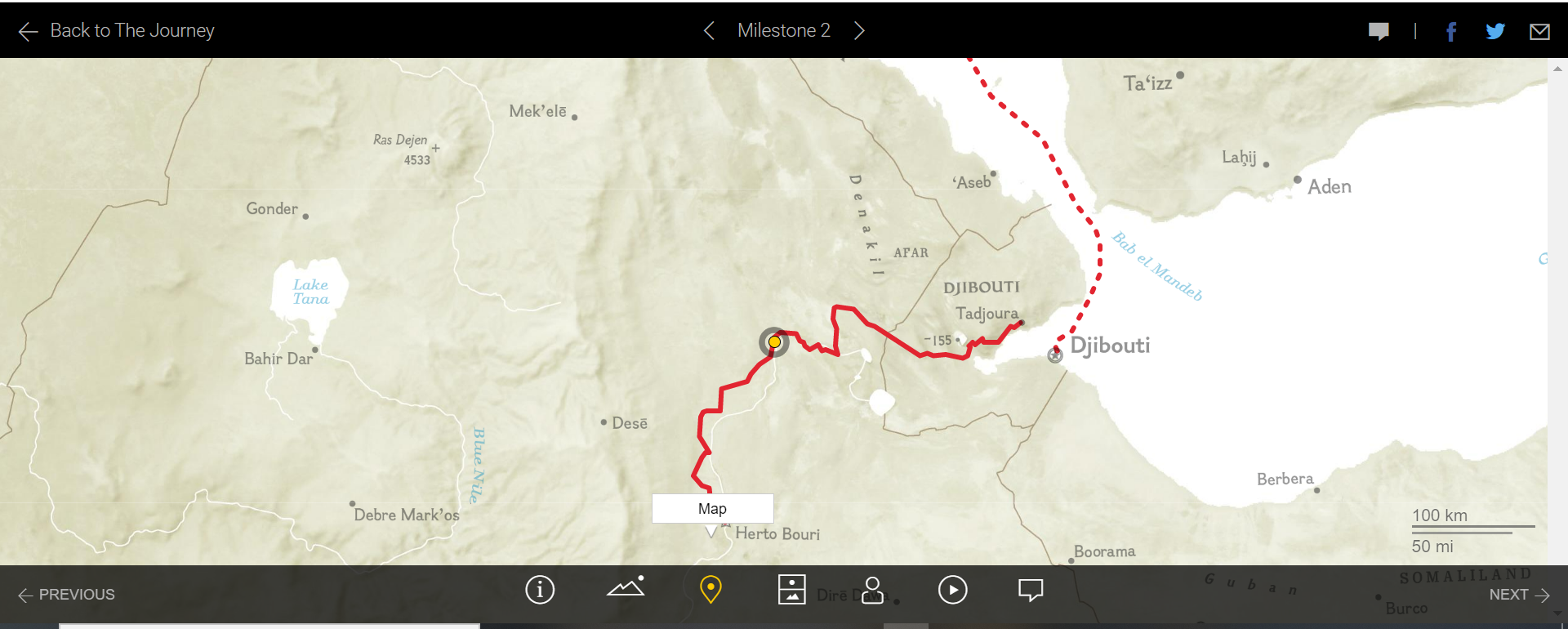
By day 19 they have reached a huge milestone of traveling 100 miles and enter into the Afar Badlands; I cannot imagine walking 100 miles. One very neat function of the tool is the Earth & Sky tool that allows you to view two images at the milestone destination. This would be exciting for students to get a real feel of what would be surrounding them if they were standing in that very spot. The contrast of the rough terrain below his feet and the rich blue sky above it magical.
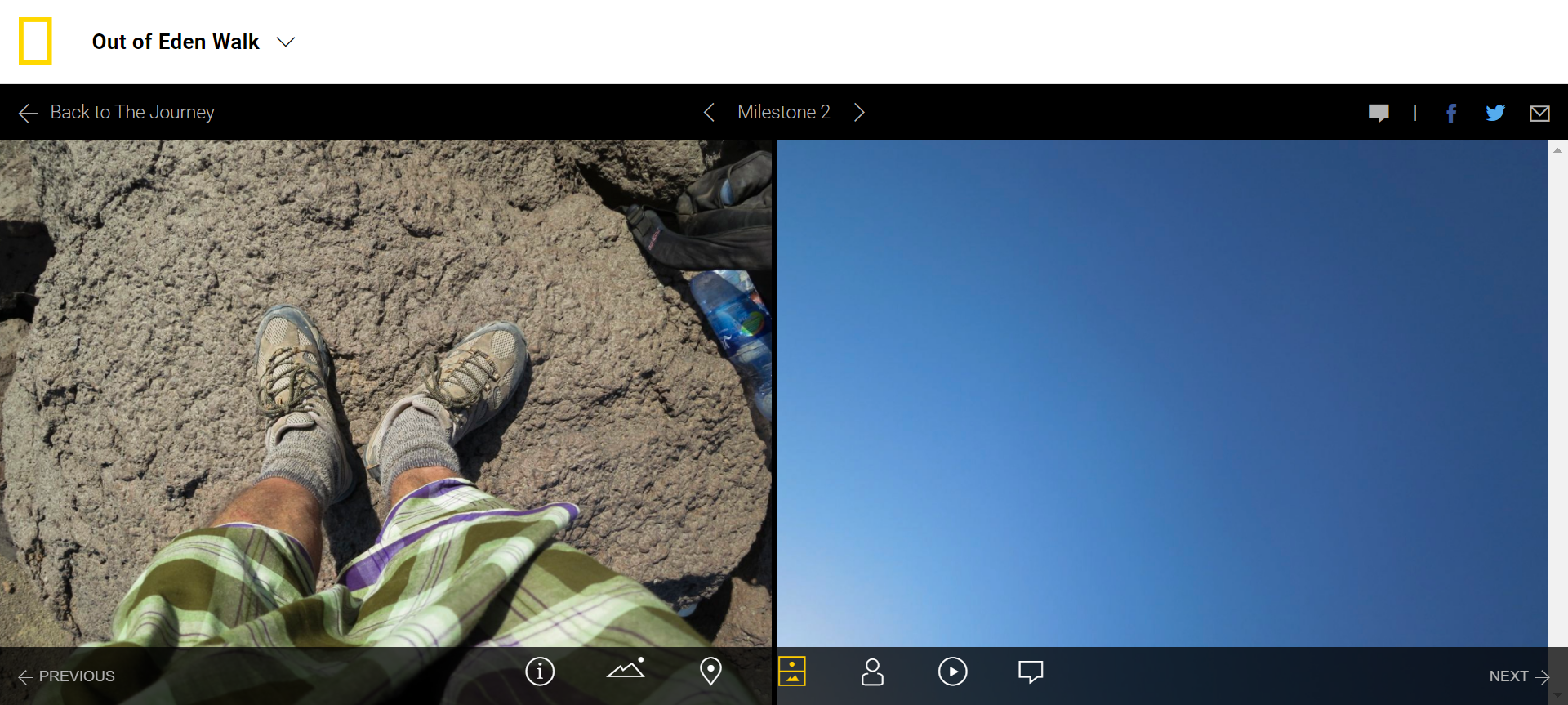
Another great feature of this tool is what they call glances that are videos that help you feel as though you are part of the journey. In this video we see the camels on their path right alongside a highway. For me this was also as the past meets the current society. The camels are a vital measure for this epic journey as they are carrying what the group needs for survival including food, water, and medical supplies.
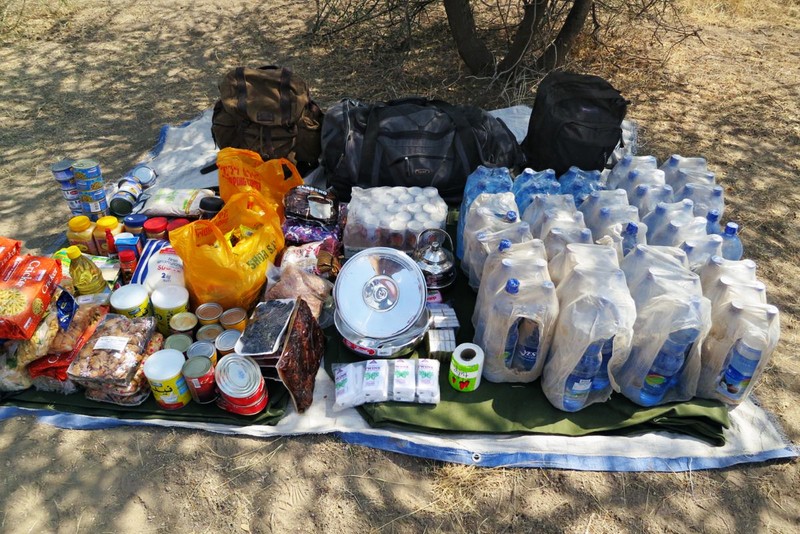
Seeing the means of travel via walking/ camel caravan is a good representation to make students apricate what great lengths the original people took. It is a great way to get students to think about life outside of what they know and help guide them to global citizenship. I think it could be helpful to challenge students to think about how people used to travel and how people live in regions that are far less industrialized. I think it could be helpful to open students minds and encourage them to empathize with those that have less available resources to them.
The second aera I selected to explore is Mile Stone 11: Near Dahaban, Saudi Arabia.

At this point the travelers have journeyed 1,000 miles and 136 days and it is now August. They have encountered many more obstructions such as farms, fenced aeras, factories, and subdivisions; obviously during the original route these did not exist. The desert sun has been unrelenting and I can’t even imagine how they were able to quest on under such conditions. The teacher in me thinks that this would be a great example to have students research the weather conditions in this region. In this milestone glances we see the camels and the group trying to take shelter from the heat of the desert under an over pass as travelers speed by on the adjacent highway. This just reemphasizes the harsh conditions of the region and the toll it is taking on those making this journey.
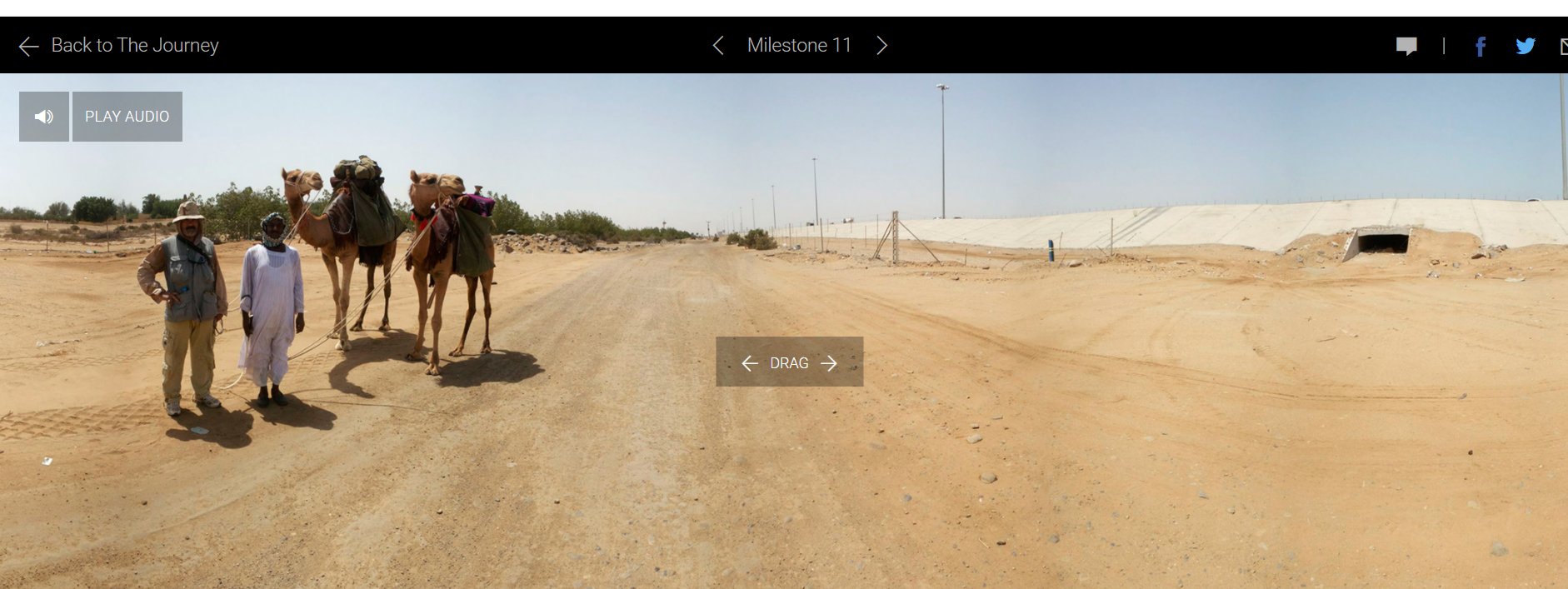
In this location there were no encounters as unsuspecting people sped by on the highway unaware of the monumental journey taking place just feet away from them.
Milestone 63 Near Varanasi, Uttar Pradesh, India
This is now day 2160 and they have traveled 6200 miles and are in a world far different than their beginnings. The glances section depicts a calm river with the sounds that surround them such as children. In the encounters we meet Phoolwanti Samayamu who is guiding her cows to drinking water.
Her story of the struggles that she endures living in the region under poverty touches me greatly. It seems as though the reduction in rain has greatly affected her lively hood causes much distress upon her family.
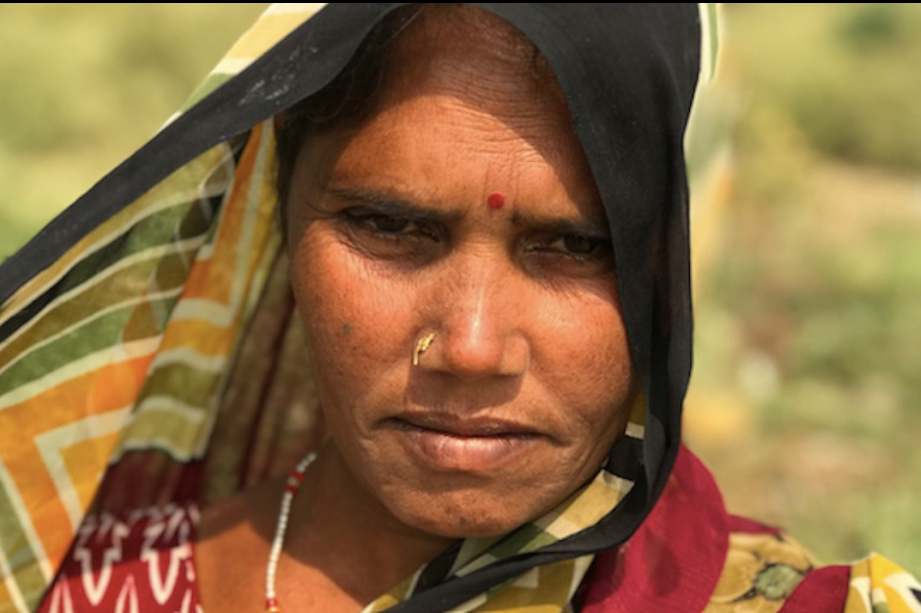
This would be a great to get students involved in exploring changing weather patterns and how global warming can greatly impact not only the landscape but people’s lives as well. The great droughts in India have impacted so many in everyday life and I think we need to encourage students to learn more about sustainable goals for their future. Water is often the key to sustaining life and is a vital point of many industries without water we would struggle.
Throughout the journey it is clear that Paul and the group has meet many different people across many different landscapes. I only explored a very small section of his great mission and can only begin to imagine what he has learned along the way. He has traveled through many different regions and cultures seeing many different struggles and successes. He has seen firsthand how society varies from location to location and explored populated regions that have modern technologies and remote villages that are barely surviving. I am thankful to experience this and can see how vital this could be in future lesson plans to challenge my students to think outside of New Jersey and their comforts.
Recent Comments